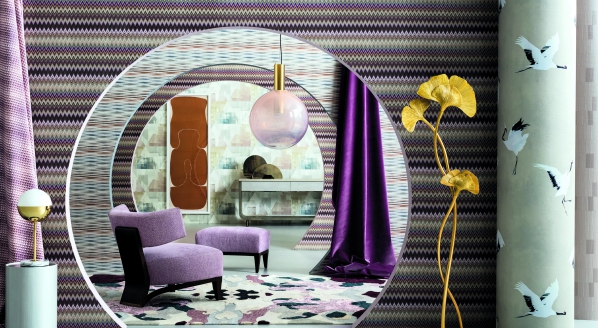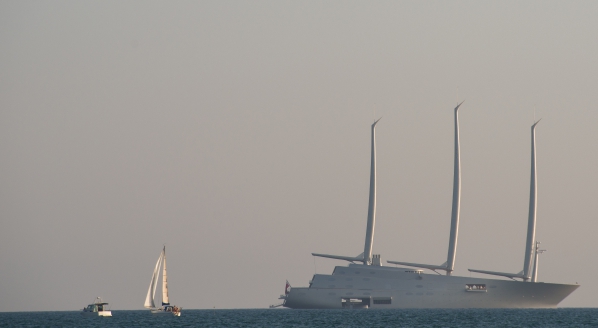The use of marble in superyacht interiors
What is behind attraction of marble and what techniques are being used by designers on superyachts today?
Marble continues to make a big statement in superyacht interiors, particularly being featured on tabletops and counter tops. For most superyacht owners, the appeal of featuring marble in any design comes from its ability to inject glamour into an interior. “Marble is very much an aesthetic choice,” explains Tim Gosling, director and founder of Gosling Marine. “It is often used extravagantly in the high- end hotels and restaurants that yacht owners visit, so for them it has an underlying affiliation with luxury.”
Marble is an expensive stone with a limited resource and, as there are a diminishing number of quarries where it can be mined, is becoming more difficult to obtain. Designers are looking further afield to source marble and Gosling explains that procuring it from atypical locations, such as China, is attracting more attention. As each marble has its own unique colour and vein, Gosling is beginning to observe more of an interest and fascination with the origin and history of every piece. Its rarity, therefore, not only makes it more luxurious, but also adds a sense of intrigue and culture.
While some designers may recommend granite as an alternative to coffee tables, as marble is much more prone to staining, this would mean significantly less veining. Most high-end marble has a very even colour palette with soft veining, which creates an elegant and uniform look, and this is what owners want. On board 70m sailing yacht Sybaris, for example, the interior design features dining tables and side tables with marble tops and titanium underneath; the Italian look gives the interior a cool and sophisticated finish.
“In living areas, marble adds a touch of luxury,” agrees Nicola Brook, head of decoration at Design Unlimited. “On a recent 55m motoryacht project, we added occasional marble side tables to give accent and colour to the scheme.” Brook adds that by utilising different techniques, designers can play around a lot with the textures of marble – the surface of the stone doesn’t just have to be smooth and shiny.
Design Unlimited works with Antolini, a marble manufacturing company that employs hydro-jetting processes. Through using a high-pressure water jet, the process can create different degrees of surface roughness without affecting the colour of the marble. The degree of erosion, achieved through the various pressures available, creates different surface finishes which become even more distinctive and eye-catching thanks to the marble’s natural patterns and veins – one example of some of the innovative technology being used in natural-stone manufacturing today.
There are also other, more obscure, techniques being used on marble in superyacht interiors. “Many people don’t realise that intricate pieces of inlay work can be created by burning marble,” adds Gosling, citing a beautiful carp pond (pictured) that the team created through employing such a technique.
As weight is an important consideration on most yachts, designers will often use honeycomb substrates that can be bonded to the back of a thinner piece of marble, therefore maintaining the overall structure and increasing the strength while halving the weight. Gosling warns that cutting marble thinly can create too much lightness, so a honeycomb structure behind it will reinforce the heaviness and quality that are desirable properties of marble. Light weight and high strength allows designers more flexibility to utilise the marble panels in ways that they can’t with heavy and fragile solid stone.
However, one of the most important considerations for designers when using marble is the method of cutting it. “Marble has intricate patterns and this can cause problems when cutting through the veins,” explains Gosling. “Depending on the angle, you have to think very carefully about where to cut the marble and how the pattern will match along the slabs. Superyacht interiors are pushing the boundaries in terms of this level of detail that is achieved with the use of marble.”
Issue 183 of The Superyacht Report focuses on the design sector. To find out if you’re eligible for a complimentary VIP subscription, click here.
Profile links
NEW: Sign up for SuperyachtNewsweek!
Get the latest weekly news, in-depth reports, intelligence, and strategic insights, delivered directly from The Superyacht Group's editors and market analysts.
Stay at the forefront of the superyacht industry with SuperyachtNewsweek
Click here to become part of The Superyacht Group community, and join us in our mission to make this industry accessible to all, and prosperous for the long-term. We are offering access to the superyacht industry’s most comprehensive and longstanding archive of business-critical information, as well as a comprehensive, real-time superyacht fleet database, for just £10 per month, because we are One Industry with One Mission. Sign up here.
Related news

The role of residential design trends in the superyacht industry
While residential design trends may not directly translate into the superyacht industry, what is their value?
Fleet

A for awful?
She's one of the most talked about superyachts in the fleet, but does global recognition really mean that S/Y A is an attractive vessel?
Fleet
Related news
A for awful?
8 years ago
NEW: Sign up for
SuperyachtNewsweek!
Get the latest weekly news, in-depth reports, intelligence, and strategic insights, delivered directly from The Superyacht Group's editors and market analysts.
Stay at the forefront of the superyacht industry with SuperyachtNewsweek




